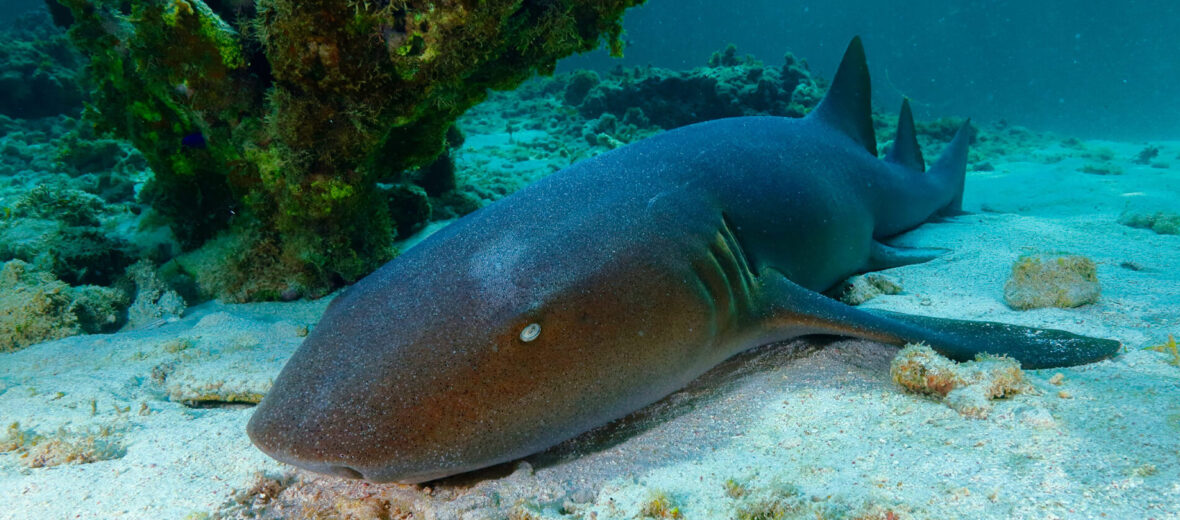
The nurse shark has got to be 1 of the laziest sharks in the ocean. They can be found in the subtropical and tropical waters of the Western and Eastern Atlantic and Eastern Pacific oceans. These sharks prefer shallower water habitats, like reefs, sand flats, and mangrove-rich estuaries. Nurse sharks are listed as Vulnerable by the IUCN. This is due to habitat destruction, pollution, human interference, and climate change (resulting in temperature extremes).
First the Stats…
Scientific name: Ginglymostoma cirratum
Weight: Up to 260+ lbs.
Length: Up to 10+ feet
Lifespan: Up to 25 years
Now on to the Facts!
1.) These sharks typically don’t pose a threat to divers and swimmers. However, they are a shark, and thus need to be given room, or a bite can occur.
2.) Their scientific name means “curled, hinged mouth” and is in reference to their puckered appearance. The common name is in relation to the suckling sound they make while eating.
3.) Nurse sharks rely on a method called buccal pumping in order to breathe. By opening and closing their jaws, they create a mild suction of water that enters their mouth and flows over their gills; supplying them with the necessary oxygen.
4.) These critters are nocturnal (active at night).
5.) Instead of just swimming around, these sharks will sometimes “walk” with their pectoral fins along the ocean floor.
But wait, there’s more on the nurse shark!
6.) They prey on fish, crabs, lobsters, sea urchins, squids, mollusks, and bivalves.
7.) Nurse sharks are not migratory.
Did you know…?
Whale sharks are their relatives.
8.) Females are ovoviviparous (eggs develop inside the female’s body).
9.) After up to a 6 month gestation (pregnancy) the female will birth up to 28 pups that measure abut 12 inches long.
10.) Like all sharks that give live birth, the pups are born precocial (self sufficient).
But wait, there’s still more on the nurse shark!
11.) Just like catfish, nurse sharks have barbels located on their snout that are used for detecting the scent of their prey.
12.) Daytime resting in large groups of 40 or so is commonplace.
13.) A new species of nurse shark was recently named, in the Caribbean, off the northeastern coast of South America, near Spain, along western Africa, and also off the coast of eastern U.S. Its scientific name is Ginglymostoma unami or the Pacific nurse shark.
14.) Female nurse sharks only tend to breed every 18 – 24 months.
Now a Short Nurse Shark Video!
Be sure to share & comment below! Also, check out the Critter Science YouTube channel. Videos added frequently!
Want to suggest a critter for me to write about? Let me know here.



